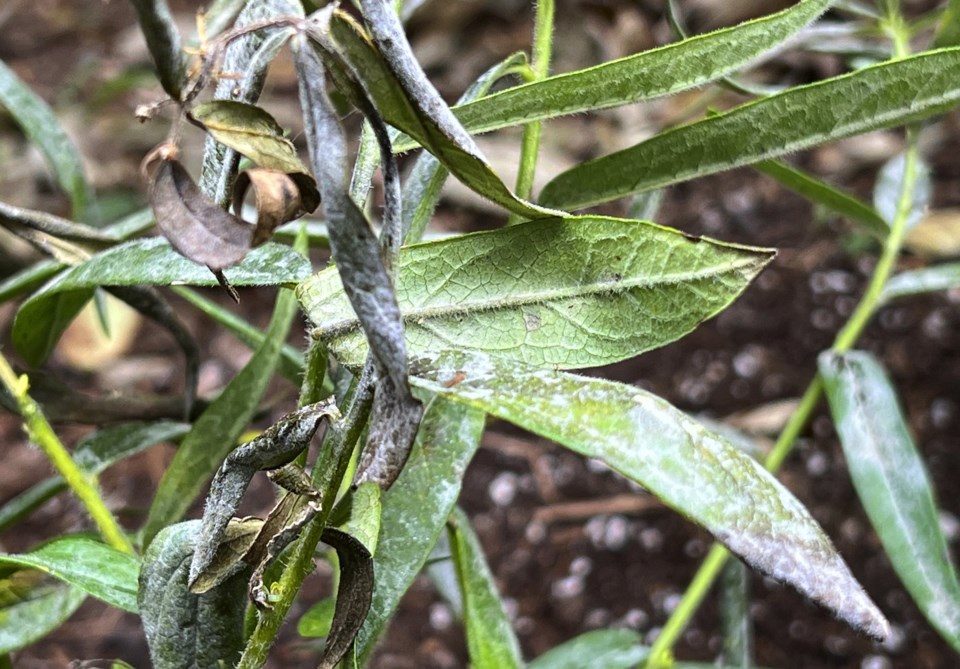Cleaning up the garden — or “putting the garden to bed” — has traditionally been a fall endeavor. In recent years, however, as information about the migrating or hibernating habits of birds, pollinators and other beneficial wildlife has seeped into the mainstream, many gardeners are postponing their big cleanups until spring. And that’s a good thing.
But there are quite a few tasks that still should be tended to now. Some are holdovers from the old protocol; others are new ways of tackling conventional chores that have evolved with our better understanding of the ecosystem.
Take leaf removal. Raking (and more recently, blowing) has long been a harbinger of fall. However, bagging and trashing those leaves — and the shelter they would provide for overwintering insects, not to mention the pollinator eggs attached to their undersides — has given way to the “leave the leaves” movement in recent years.
Homeowners are realizing that sending a plastic bag of organic matter to a landfill not only ensures it will outlast themselves, but also amounts to throwing away free fertilizer. Allowing leaves to remain where they fall around perennials, trees and shrubs, and moving them from lawns to beds and borders enriches the soil with plant-boosting nutrients. It also provides shelter and habitat for overwintering pollinators.
Instead of cutting every perennial to ground level before the first frost, gardeners are now being selective. Allowing the dried seed heads of plants like purple coneflower (Echinacea), black-eyed Susan (Rudbeckia), anise hyssop (Agastache), goldenrod (Solidago) and others to stand all winter will provide food for nonmigratory birds.
Leaving ornamental grasses standing provides shelter for wildlife and traps snow, which insulates and protects roots.
A few plants, however, should be cut down in the fall. Hostas are a favorite hideaway for overwintering slugs and pests, while winter-standing irises protect the dreaded iris borer eggs.
Plants susceptible to mildew, like peonies, phlox and bee balm, are best cut back, even if they weren’t infected.
The above-ground growth of plants that were diseased this past season also needs to go, regardless of the pathogen. Don’t allow their fallen leaves or plant parts to remain on the ground, or they’ll infect the soil and next year’s plants. Never compost them.
Fall is also the time to dig up and store tender bulbs like gladiolas, dahlias, cannas, tuberous begonias and elephant ears.
Pull up spent annuals and collect their seeds. Store them in a paper envelope or glass jar in a cool, dark place for next season.
And weed. There’s an old expression that goes, “One year’s seedling makes seven years of weeding.” That’s an understatement, as some weed seeds can remain viable in the soil for decades. Pull them up by their roots before they set seed. You’ll thank yourself next year.
Harvest the last of your summer vegetables. Eat what you can and preserve, dry or freeze what you can’t.
Plant garlic and spring-flowering bulbs.
Clear summer-crop beds of debris. And, if you really want to hit the ground running next spring, test your soil’s pH, amend it if indicated, and spread a 3-inch layer of compost over the bare soil.
Apply 3 inches of mulch around plants and trees, but wait until after the ground freezes. It will keep soil temperatures even and protect roots from heaving during the freeze-thaw cycles of winter. Push the mulch a few inches away from shrub and tree trunks, or they may rot.
Terra cotta absorbs water, and pots can become damaged when that water freezes and expands. Store them indoors.
Finally, prepare yourself for the magic of spring. I’m not being hokey. It really is magic: Those leaves you spend hours cleaning up or pushing aside now will magically reappear in a few months, and you’ll find yourself raking again. I can’t explain why. You just will.
___
Jessica Damiano writes weekly gardening columns for the AP and publishes the award-winning Weekly Dirt Newsletter. You can sign up here for weekly gardening tips and advice.
___
For more AP gardening stories, go to https://apnews.com/hub/gardening.
Jessica Damiano, The Associated Press




